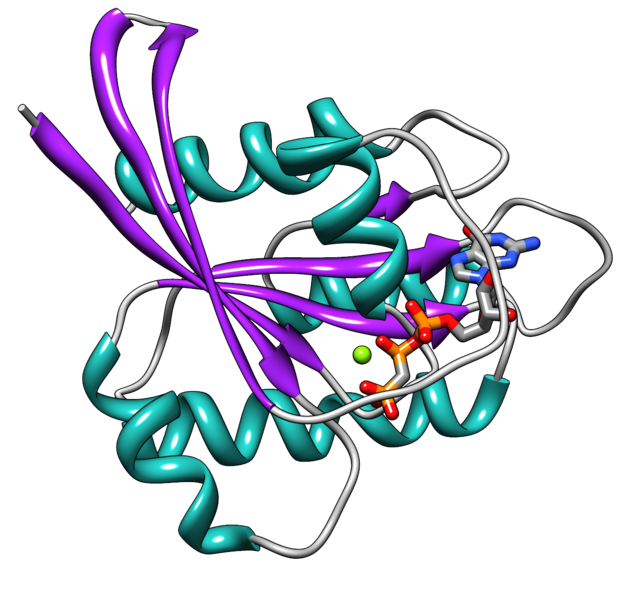By Frank Blanchard, Staff Writer
Armed with an array of leading-edge technologies, scientific and technical expertise, and the full backing of the National Cancer Institute’s (NCI’s) scientific advisers, the Frederick National Laboratory for Cancer Research (FNLCR) is preparing to launch a full-scale attack against an intractable problem: the cancer-causing family of Ras genes.
Ras genes code for a set of proteins that are instrumental in cellular signaling, and when mutated, permit uncontrolled cellular proliferation in colorectal, lung, and pancreatic cancers, and many other malignancies.
This gene family underlies 33 percent of all human cancers, including 90 percent of pancreatic cancers. The genes were first identified decades ago, but little progress has been made over the years in converting this scientific understanding into effective treatments for cancer patients. This may be about to change.
With unanimous concurrence of both the National Cancer Advisory Board (NCAB) and the NCI Board of Scientific Advisers (BSA), FNLCR is gearing up for what may be the most concerted effort to date against Ras.
Using the Advanced Technology Research Facility as its base, FNLCR will anchor a nationwide program that will unite geographically and scientifically disparate research groups already at work on Ras in a focused effort to flesh out scientific understanding of the potent gene family and to translate that understanding into candidate drugs for clinical testing.
“This unanimous endorsement by BSA/NCAB is really a big milestone for the program,” said Dave Heimbrook, Ph.D., chief executive officer of SAIC-Frederick. Details of the program are evolving as discussions continue among NCI leadership, FNLCR leadership, and the broader cancer research community.
Using Resources in a Focused Way
The initial concept grew out of the NCI-Frederick Advisory Committee (NFAC), which favors using FNLCR resources in a highly focused and collaborative way to take on major problems in cancer research and development that have been difficult to solve by other means. About $10 million annually in existing funding is being reprogrammed within the SAIC-Frederick contract to support the program.
FNLCR will serve as the anchor, or hub, with spokes that connect academic, nonprofit, biotech, and pharmaceutical partners. FNLCR proposes to be the multidisciplinary, catalytic engine that develops and provides reference-quality reagents and novel assays. Intellectual collaboration and coordination of effort will be a central component for success.
Hand-in-hand with its collaborators, FNLCR will bring its technological expertise to bear in the following areas: imaging; proteins and protein biophysics and assays; cells and cell lines; in vivo models; genomics; proteomics and biomarkers, and nanotechnology.
Program Leadership Team to Be Led by Frank McCormick
Earlier this year, NCI Director Harold Varmus, M.D., and Frank McCormick, Ph.D., director of the Helen Diller Family Comprehensive Cancer Center at the University of California, San Francisco, and associate dean of the School of Medicine, co-chaired a workshop in San Francisco that was attended by Heimbrook and Chief Technology Officer Atsuo Kuki, Ph.D., along with members of NFAC and about 30 academic and industrial cancer biology experts, to further develop the concept.
The Ras program will be led by McCormick, who signed a consulting agreement in May with SAIC-Frederick. He will spend about half of his time helping develop and lead the national Ras program. A Ras program leadership team will consist of McCormick, NCI leadership, and SAIC-Frederick leadership, with additional guidance from an NFAC subcommittee.
In his presentation to the NCI advisory boards, McCormick outlined five proposed components of the program: (1) target mutant alleles; (2) explore KRAS selective compounds; (3) attempt to disrupt KRAS complexes; (4) map the surface of KRAS cancer cells; and (5) develop next-generation, synthetic lethal screens in vivo.
He punctuated his remarks to the advisory boards this way:
“The time is right.”


